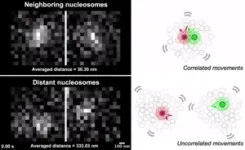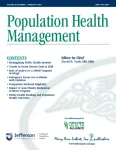(Press-News.org) A new review of previously published studies on methods for reducing conspiracy beliefs has shown that most of these methods are ineffective, but that those focused on fostering critical thinking or an analytical mindset show some promise. Cian O’Mahony of University College Cork, Ireland, and colleagues present these findings in the open-access journal PLOS ONE on April 5.
Evidence from prior studies suggests that belief in conspiracy theories can be associated with harmful consequences, such as—in the case of COVID-19 conspiracies—reduced adherence to public health recommendations. In recent years, behavioral researchers have investigated how to reduce conspiracy beliefs. However, until now, no study has comprehensively reviewed existing evidence for the effectiveness of various approaches.
O’Mahony and colleagues conducted a systematic review to analyze 25 previously published studies, with a total of 7,179 participants, that evaluated various approaches for reducing conspiracy beliefs. For example, some studies employed straightforward counterarguments against conspiracy theories, and others used ways of priming participants to have a more analytical mindset before asking them about their conspiracy beliefs.
The analysis showed that, out of all methods in the 25 studies, only half were associated with any change in participants’ conspiracy beliefs, and just a few produced changes of a meaningful size. This suggests that most existing methods for changing conspiracy beliefs are ineffective. Notably, effective interventions tend to be presented to participants before exposure to conspiracy statements, while post-exposure interventions are generally less effective.
The most effective methods were those that drew attention to the factual inaccuracies of conspiracy beliefs prior to presenting participants with conspiracy statements. Another relatively more effective method was a 3-month educational course on differentiating between scientific and pseudoscientific practices. Traditional counterarguments against conspiracy beliefs were some of the least effective methods.
Drawing from their findings, the researchers suggest that future development of methods to counter conspiracy beliefs should focus on fostering critical thinking and an analytical mindset, as well as reaching people before they are exposed to conspiracy theories. They also outline a number of challenges facing such research, such as the need to determine how well different methods might work in the real world outside of a controlled study.
The authors add: “One of the most important findings of our review is that traditional fact-checking and counterarguments are the least effective means of combating conspiracy beliefs. We found that preventative measures, such as exposing participants to counterarguments before they encountered misinformation, were the most effective strategies to challenge conspiracy beliefs. We also found that most interventions would be difficult to implement in real-world settings, which is why we are developing a more viable intervention funded by the Irish Research Council's Enterprise Partnership with Google in the form of a video game.”
#####
In your coverage please use this URL to provide access to the freely available article in PLOS ONE: https://journals.plos.org/plosone/article?id=10.1371/journal.pone.0280902
Citation: O’Mahony C, Brassil M, Murphy G, Linehan C (2023) The efficacy of interventions in reducing belief in conspiracy theories: A systematic review. PLoS ONE 18(4): e0280902. https://doi.org/10.1371/journal.pone.0280902
Author Countries: Ireland
Funding: Awardee: COM Grant Number: EPSPG/2021/212 Funder: Irish Research Council URL: https://research.ie/. The funders had no role in study design, data collection and analysis, decision to publish, or preparation of the manuscript.
END
To counteract conspiracy beliefs, most–but not all–existing methods are ineffective
Systematic review suggests traditional counterarguments don’t work, but approaches fostering critical thinking and an analytical mindset might
2023-04-05
ELSE PRESS RELEASES FROM THIS DATE:
Euchromatin is not really open in living cells
2023-04-05
DNA and associated proteins in active regions of the genome are condensed but behave like a viscous liquid at the molecular level. This finding greatly increases our understanding of the physical nature of expressed genome regions in living human cells.
The human genome DNA has a remarkable capacity for compaction. When 46 sets of human chromosomes are stretched end to end, they collectively reach two meters in length but are somehow arranged in a nucleus with only about ten micrometers in diameter. To fit inside the nucleus, the strands of DNA are wrapped ...
A new type of photonic time crystal gives light a boost
2023-04-05
Researchers have developed a way to create photonic time crystals and shown that these bizarre, artificial materials amplify the light that shines on them. These findings, described in a paper in Science Advances, could lead to more efficient and robust wireless communications and significantly improved lasers.
Time crystals were first conceived by Nobel laureate Frank Wilczek in 2012. Mundane, familiar crystals have a structural pattern that repeats in space, but in a time crystal, the pattern repeats in time instead. While some physicists were ...
Beneath the Earth, ancient ocean floor likely surrounds the core
2023-04-05
Embargoed: Not for Release Until 2:00 pm U.S. Eastern Time Wednesday, 05 April 2023.
TUSCALOOSA, Ala. — Through global-scale seismic imaging of Earth’s interior, research led by The University of Alabama revealed a layer between the core and the mantle that is likely a dense, yet thin, sunk ocean floor, according to results published today in Science Advances.
Seen only in isolated patches previously, the latest data suggests this layer of ancient ocean floor may cover the core-mantle boundary. Subducted underground long ago as the Earth’s plates shifted, this ultra-low velocity zone, or ULVZ, is denser than the rest ...
Most existing methods to tackle conspiracy beliefs are ineffective, study finds
2023-04-05
A new review of methods for reducing conspiracy beliefs has shown that most methods are ineffective, but that those focused on fostering critical thinking or an analytical mindset show some promise.
Led by researchers at University College Cork (UCC), the study is the first comprehensive review of the effectiveness of various conspiracy interventions. It is published in PLOS ONE.
While holding conspiracy beliefs has been associated with several detrimental social, personal, and health consequences, little research has been dedicated to systematically reviewing the methods that could reduce conspiracy beliefs.
To ...
Creating a blueprint for optimized ear tubes and other implantable fluid-transporting devices
2023-04-05
By Benjamin Boettner
(BOSTON) — Infections of the middle ear, the air-filled space behind the eardrum that contains the tiny vibrating bones of hearing, annually affect more than 700 million people worldwide. Children are especially prone to ear infections, with 40% of them developing recurrent or chronic infections that can lead to complications like impaired hearing, speech and language delays, perforations in their eardrums, and even life-threatening meningitis.
As a treatment, doctors may surgically insert ear tubes knowns as “tympanostomy tubes” (TTs) into the eardrum to create an opening between the ear canal ...
Humans vs. Bacteria: Differences in ribosome decoding revealed
2023-04-05
Memphis, Tenn.—April 5, 2023) Scientists at St. Jude Children’s Research Hospital revealed that human ribosomes decode messenger RNA (mRNA) 10 times slower than bacterial ribosomes, but do so more accurately. The study, published today in Nature, used a combination of field-leading structural biology approaches to better understand how ribosomes work. The scientists pinpointed where the process slows down in humans, which will be useful information for developing new therapeutics for cancer and infections.
Ribosomes are ...
Solid-state lithium-sulfur batteries: Neutrons unveil sluggish charge transport
2023-04-05
The scientists designed a special cell in order to observe the transport of lithium-ions between the anode and the cathode in a solid-state Lithium-Sulfur battery. Since lithium can hardly be detected with x-ray methods, HZB physicists Dr. Robert Bradbury and Dr. Ingo Manke examined the sample cell with neutrons, which are extremely sensitive to lithium. In conjunction with Dr. Nikolay Kardjilov, HZB, they used neutron radiography and neutron tomography methods on the CONRAD2 instrument at the Berlin neutron source BER II1. Groups from Giessen (JLU), Braunschweig (TUBS) and Jülich (FZJ) were also involved in the work.
Lithium ...
Stripped to the bone
2023-04-05
Natural disasters can devastate a region, abruptly killing the species that form an ecosystem’s structure. But how this transpires can influence recovery. While fires scorch the landscape to the ground, a heatwave leaves an army of wooden staves in its wake. Storm surges and coral bleaching do something similar underwater.
UC Santa Barbara scientists investigated how these two kinds of disturbances might affect coral reefs. They found that coral struggles more to recover from bleaching than from storms, ...
Emory researchers discover key pathway for COVID organ damage in adults
2023-04-05
Even after three years since the emergence of COVID-19, much remains unknown about how it causes severe disease, including the widespread organ damage beyond just the lungs. Increasingly, scientists are learning that organ dysfunction results from damage to the blood vessels, but why the virus causes this damage is unclear. Now a multidisciplinary team of Emory researchers has discovered what they believe is the key molecular pathway.
Results of their study, published today in Nature Communications, show that COVID-19 damages the cells lining the smallest blood vessels, choking off blood flow. These results could pave the way for new treatments to save lives at a time when hundreds ...
Population Health Management
2023-04-05
The COVID-19 pandemic has underscored the inequality in American health care systems, which consistently neglect the needs of underserved communities, leaving them without access to quality care. A commentary published in Population Health Management highlights the need for a transformational change in our health care systems to advance health equity and address structural racism and health disparities affecting wellbeing. Click here to read the article now.
Coauthors Dr. Jonathan B. Perlin, President ...
LAST 30 PRESS RELEASES:
University of Oklahoma researcher awarded funding to pursue AI-powered material design
Exploring how the visual system recovers following injury
Support for parents with infants at pediatric check-ups leads to better reading and math skills in elementary school
Kids’ behavioral health is a growing share of family health costs
Day & night: Cancer disrupts the brain’s natural rhythm
COVID-19 vaccination significantly reduces risk to pregnant women and baby
The role of vaccination in maternal and perinatal outcomes associated with COVID-19 in pregnancy
Mayo Clinic smartwatch system helps parents shorten and defuse children's severe tantrums early
Behavioral health spending spikes to 40% of all children’s health expenditures, nearly doubling in a decade
Digital cognitive behavioral treatment for generalized anxiety disorder
Expenditures for pediatric behavioral health care over time and estimated family financial burden
Air conditioning in nursing homes and mortality during extreme heat
The Alps to lose a record number of glaciers in the next decade
What makes a good proton conductor?
New science reporting guide published for journalists in Bulgaria
New international study reveals major survival gaps among children with cancer
New science reporting guide published for journalists in Turkey
Scientists develop a smarter mRNA therapy that knows which cells to target
Neuroanatomy-informed brain–machine hybrid intelligence for robust acoustic target detection
Eight SwRI hydrogen projects funded by ENERGYWERX
The Lundquist Institute and its start-up company Vitalex Biosciences Announces Strategic Advancement of Second-Generation fungal Vaccine VXV-01 through Phase 1 Trials under $40 Million Competitive Con
Fine particles in pollution are associated with early signs of autoimmune disease
Review article | Towards a Global Ground-Based Earth Observatory (GGBEO): Leveraging existing systems and networks
Penn and UMich create world’s smallest programmable, autonomous robots
Cleveland researchers launch first major study to address ‘hidden performance killer’ in athletes
To connect across politics, try saying what you oppose
Modulating key interaction prevents virus from entering cells
Project explores barriers to NHS career progression facing international medical graduates
Jeonbuk National University researchers explore the impact of different seasonings on the flavor perception of Doenjang soup
Two Keck Medicine of USC Hospitals named Leapfrog Top Teaching Hospitals
[Press-News.org] To counteract conspiracy beliefs, most–but not all–existing methods are ineffectiveSystematic review suggests traditional counterarguments don’t work, but approaches fostering critical thinking and an analytical mindset might








